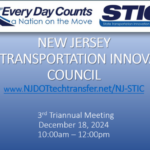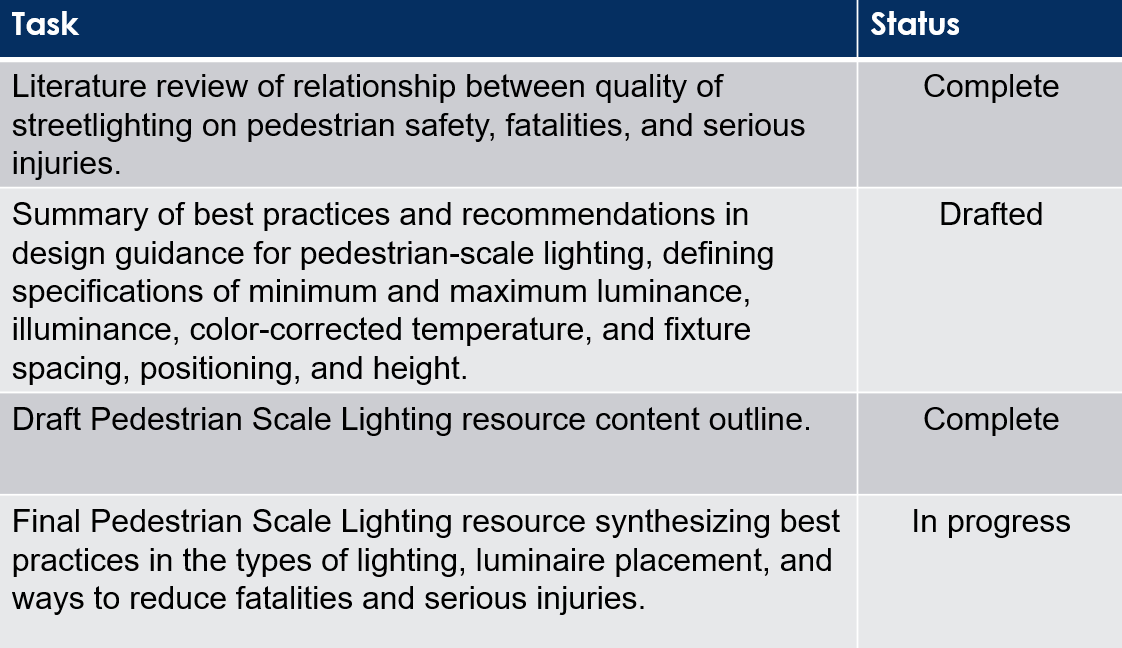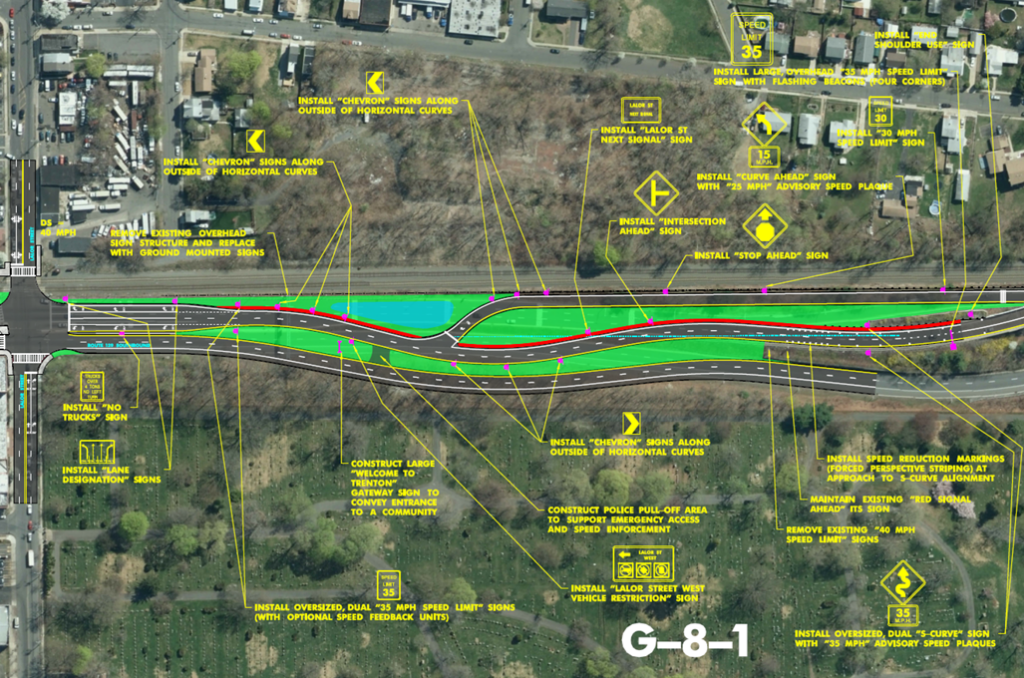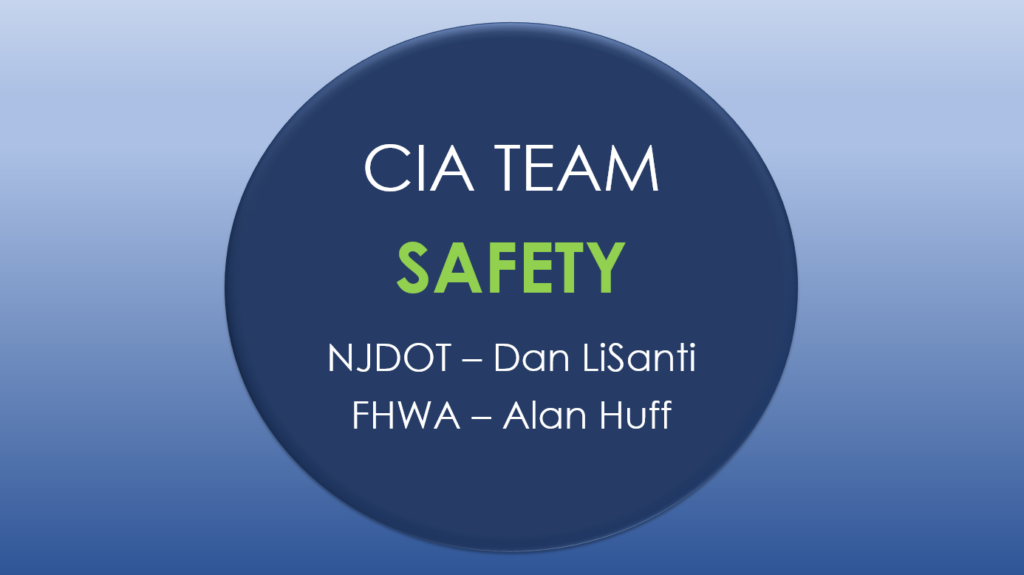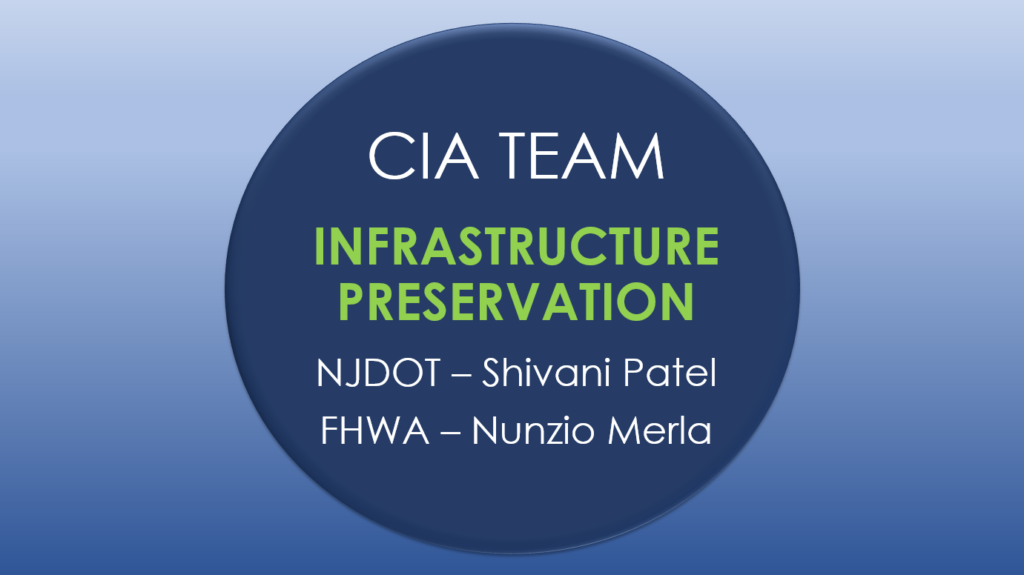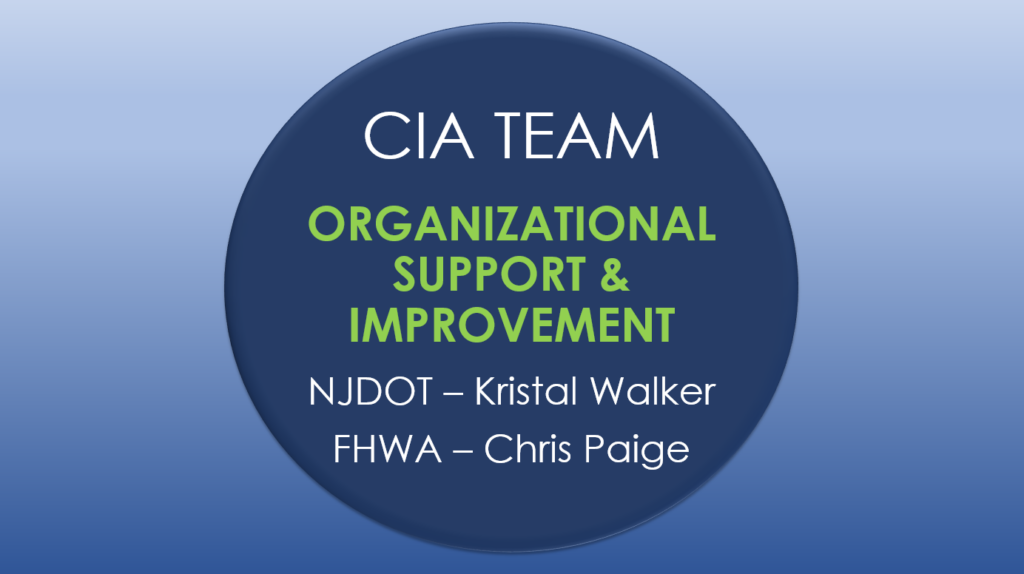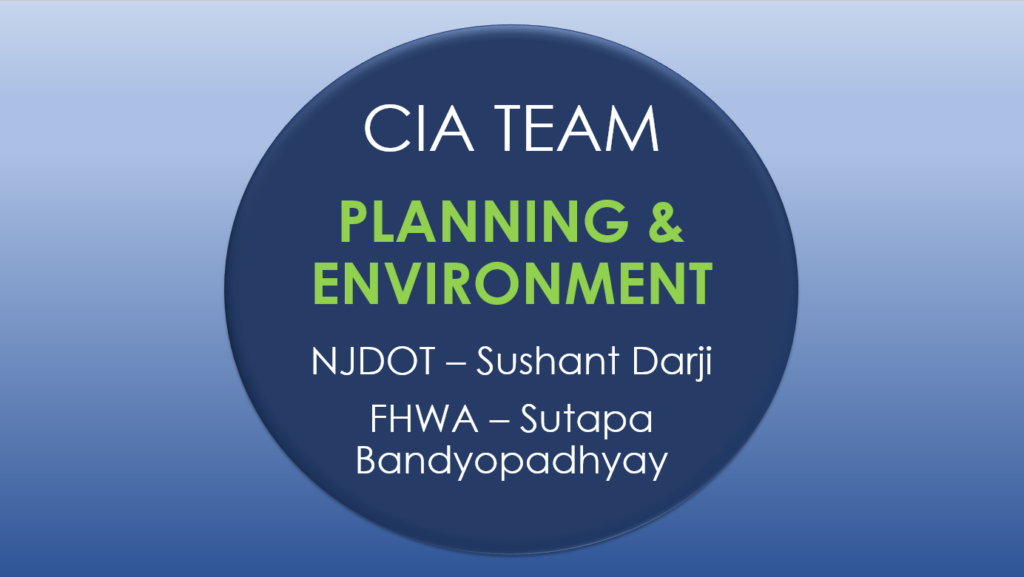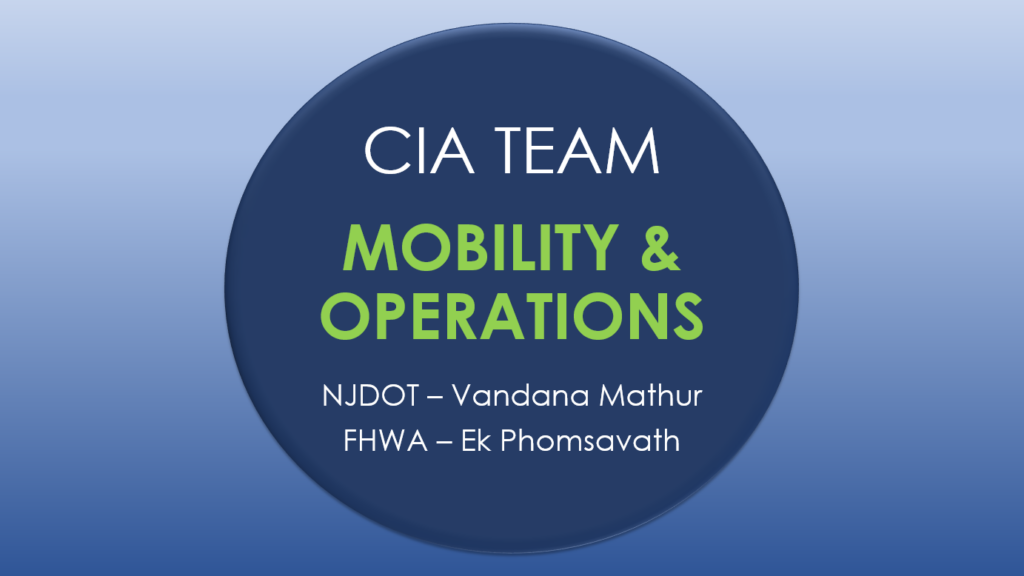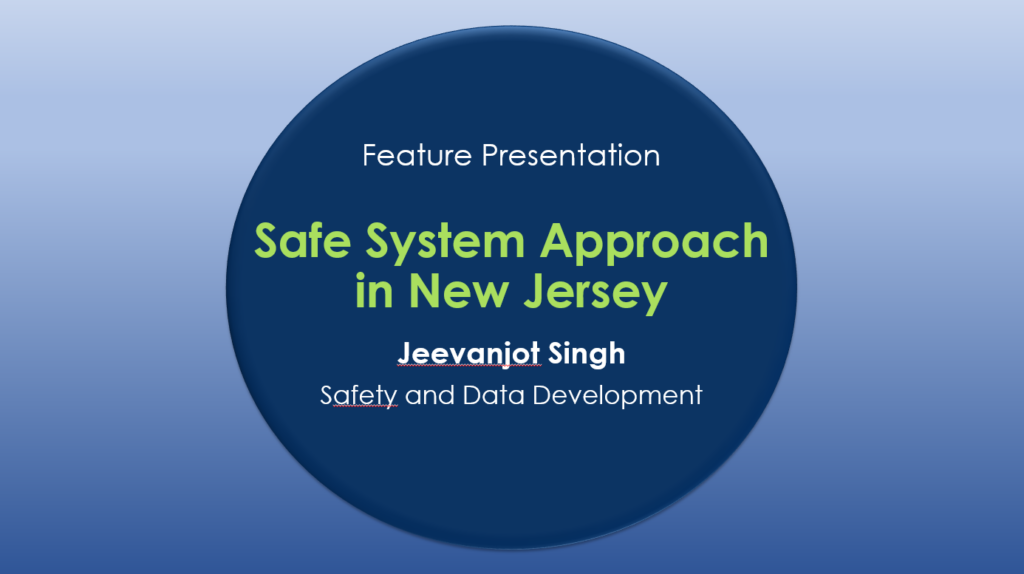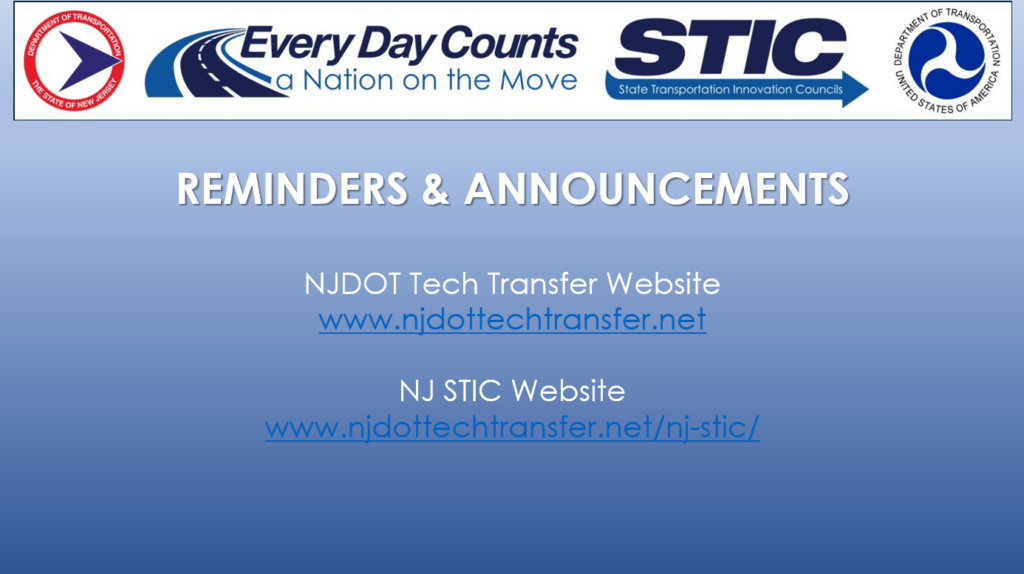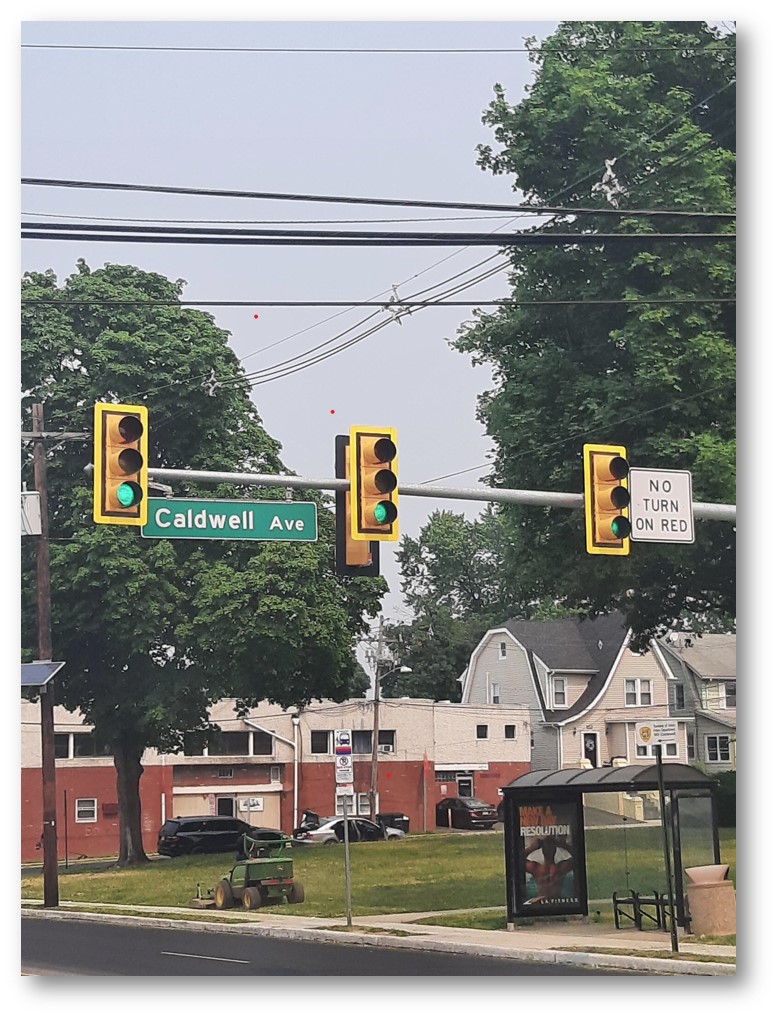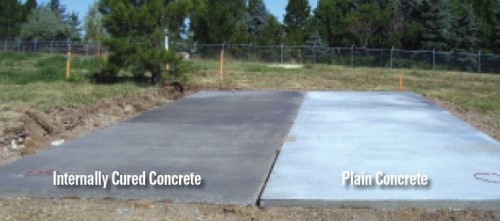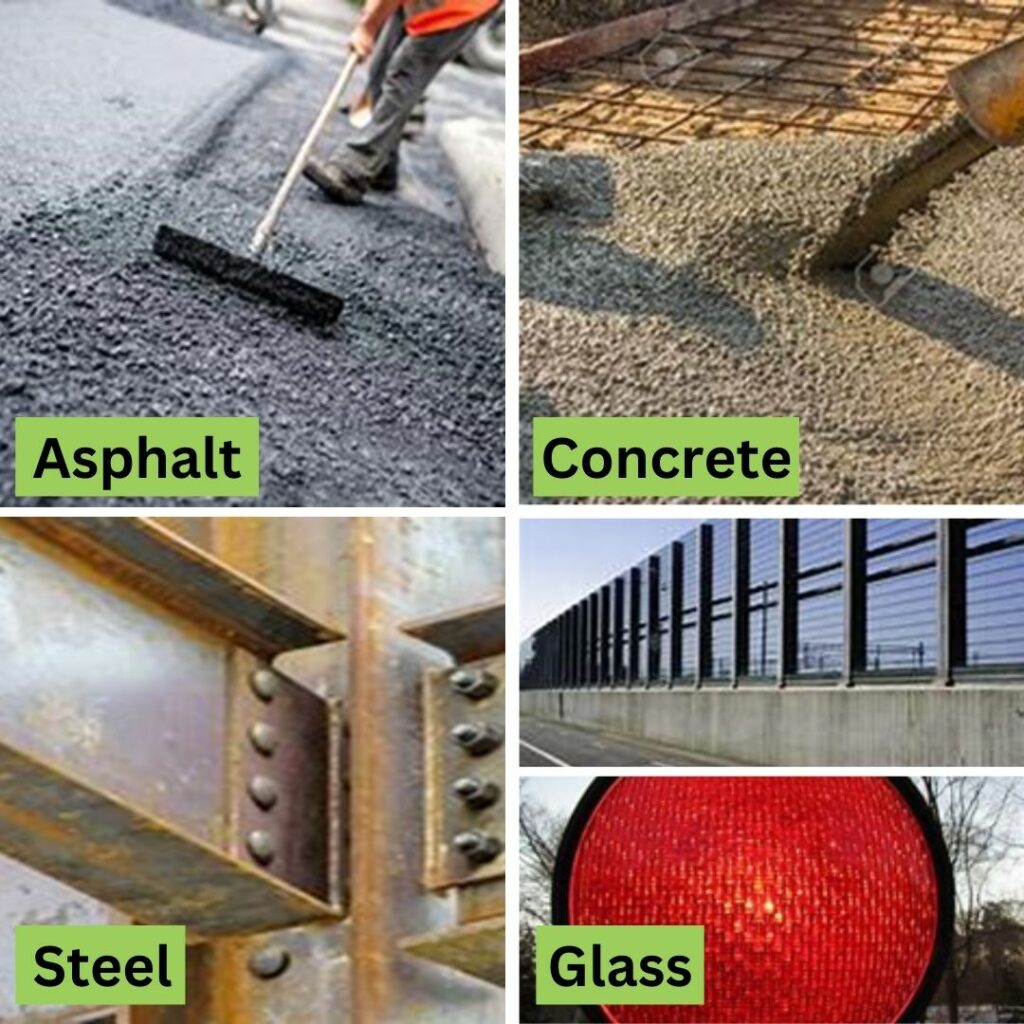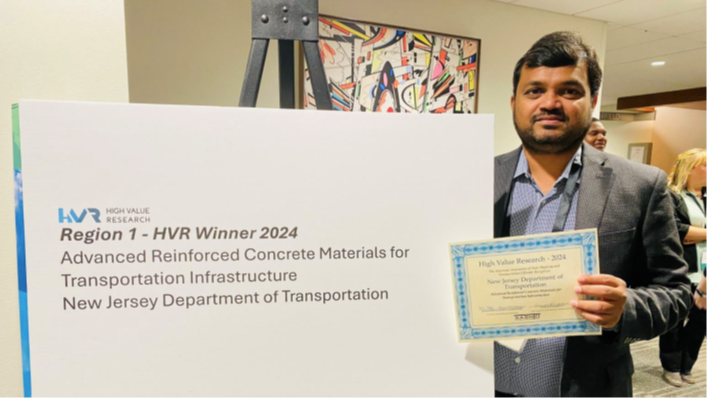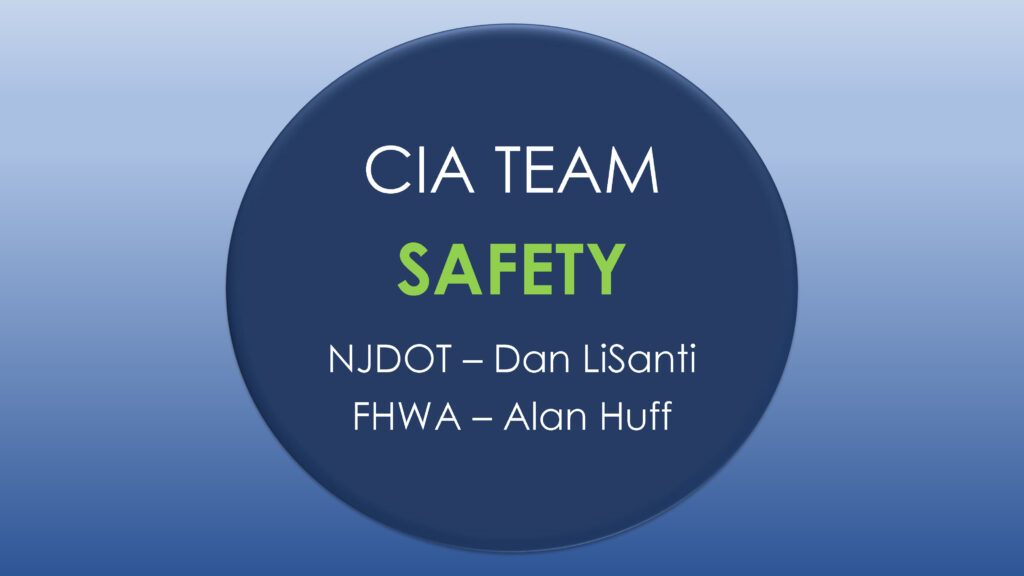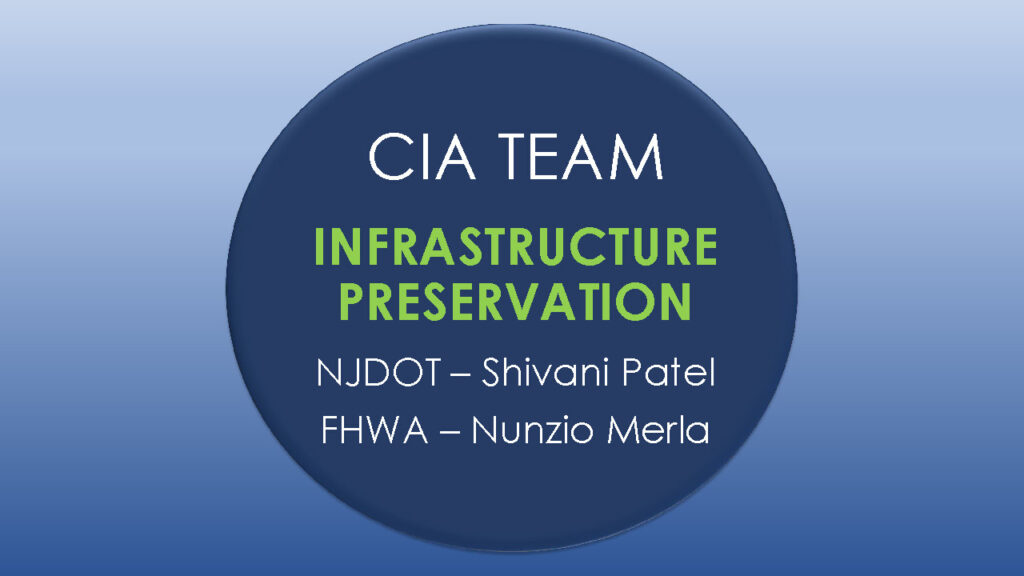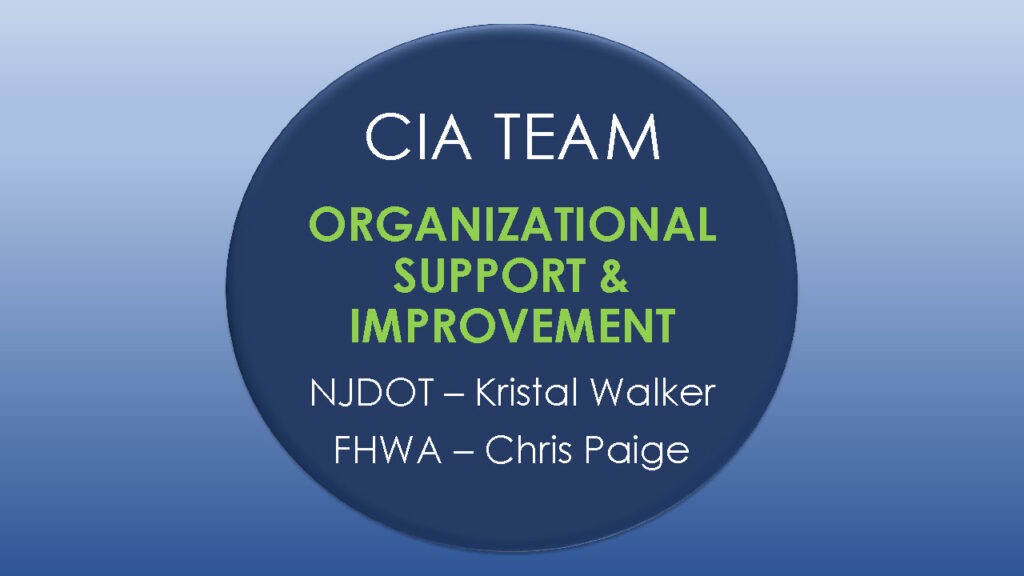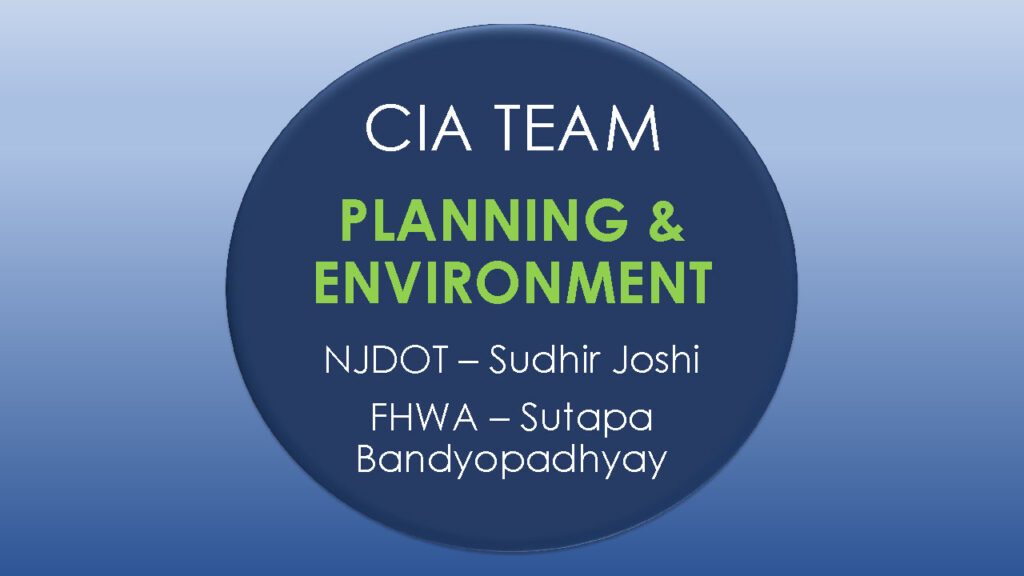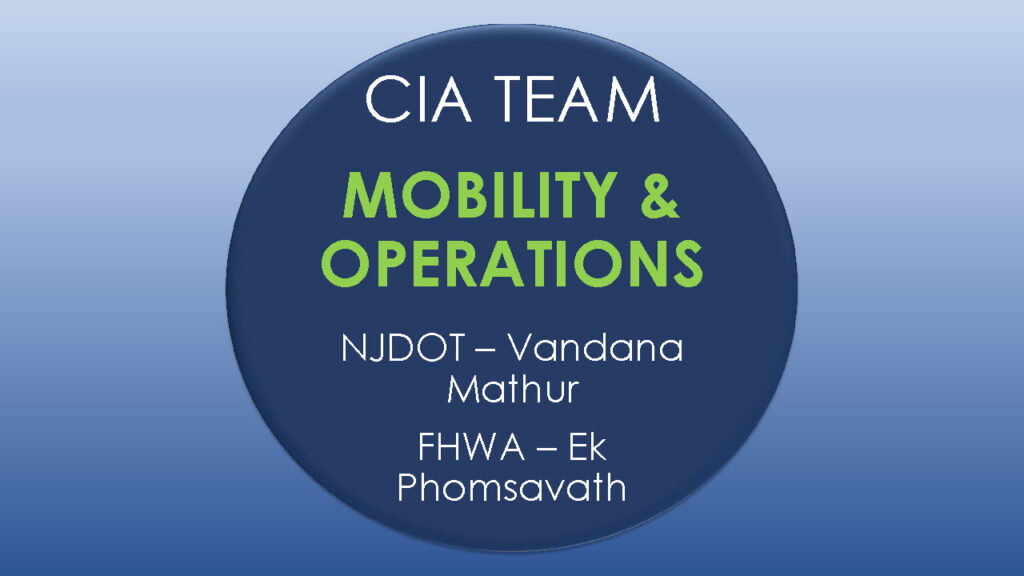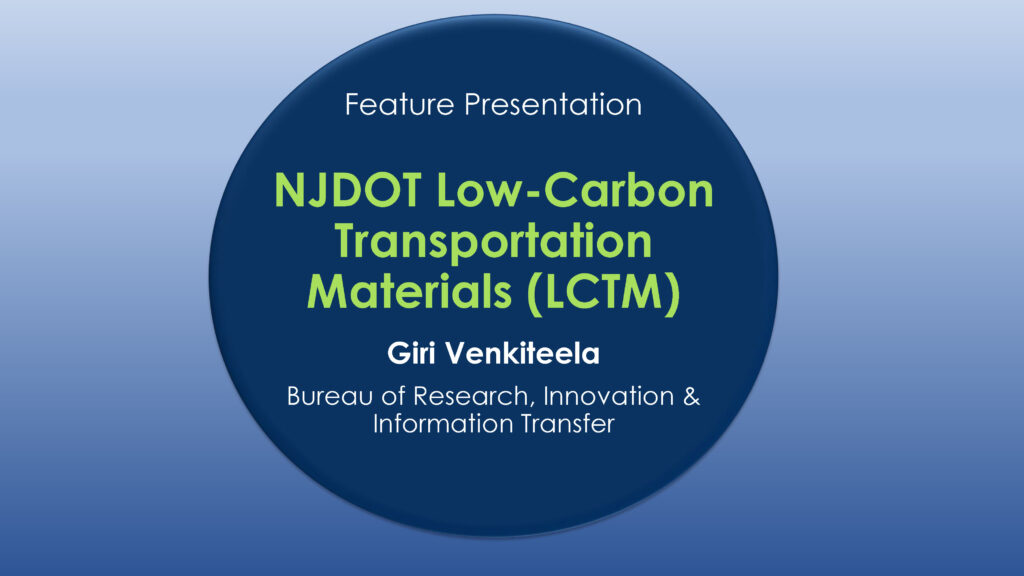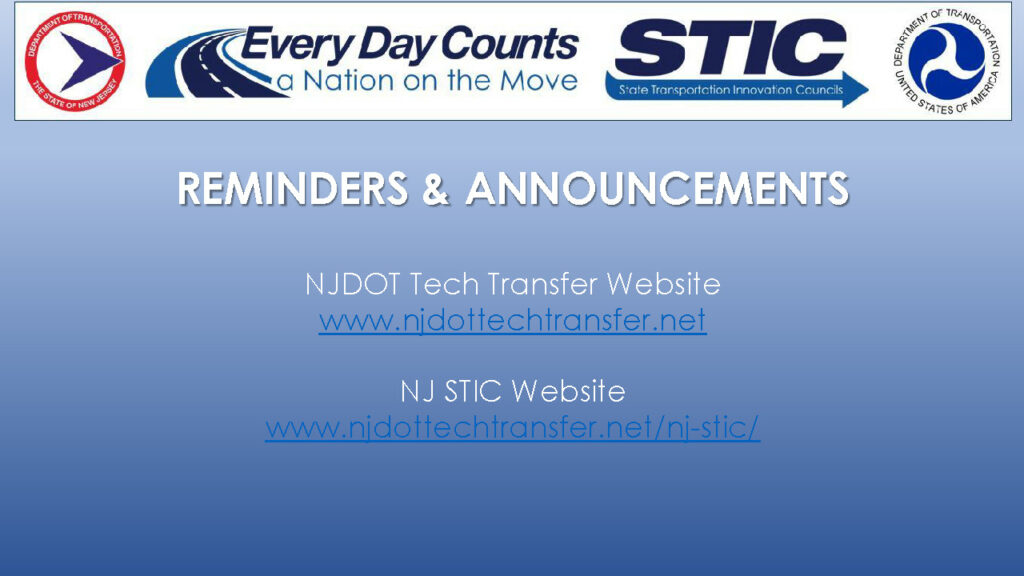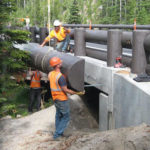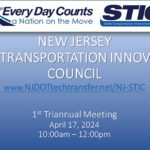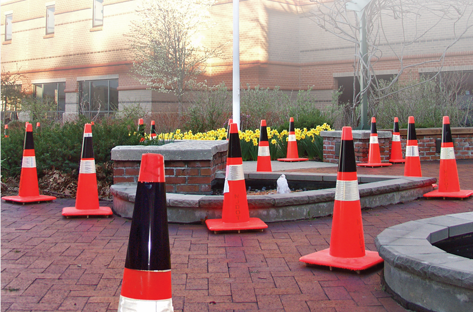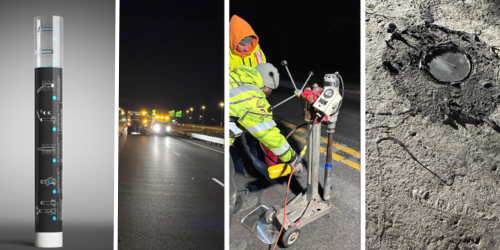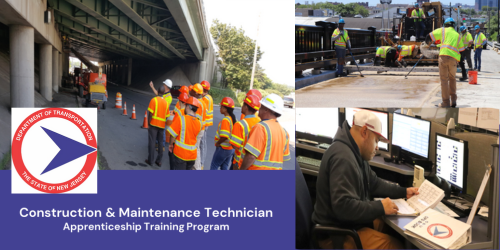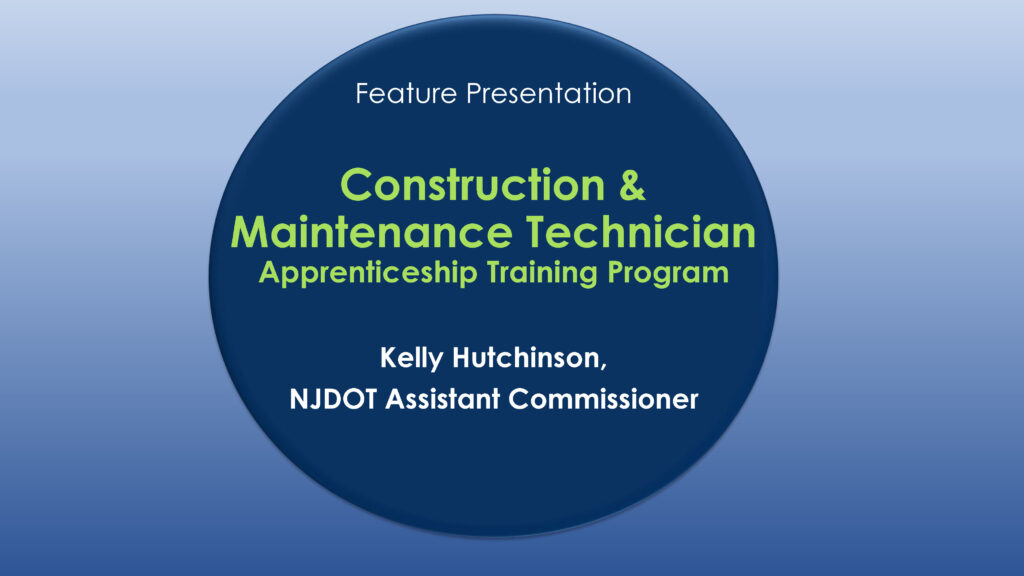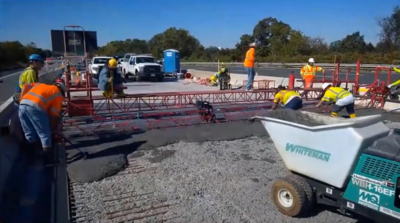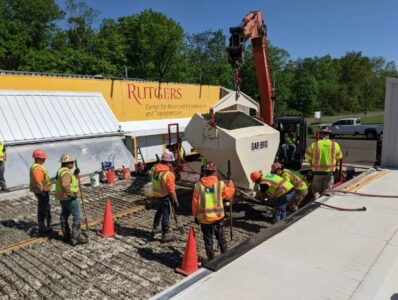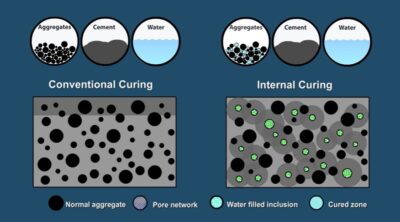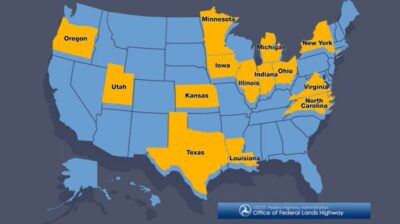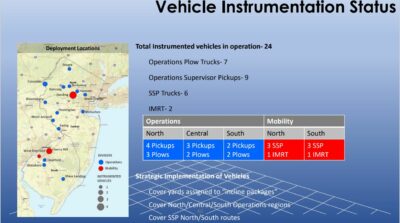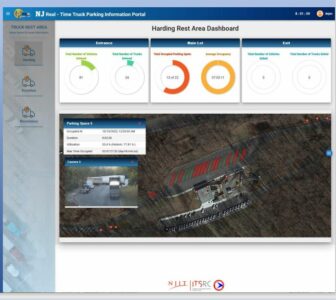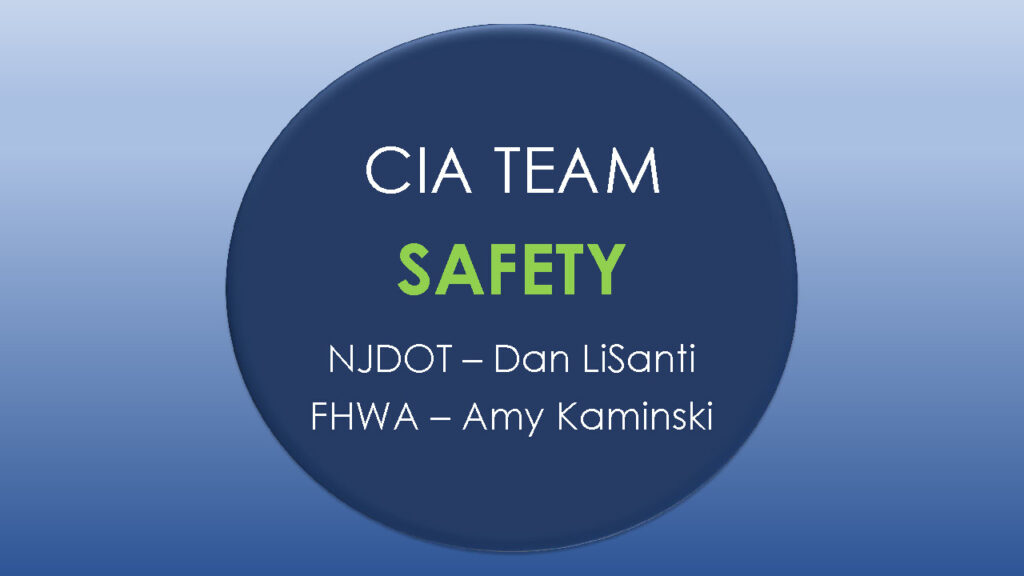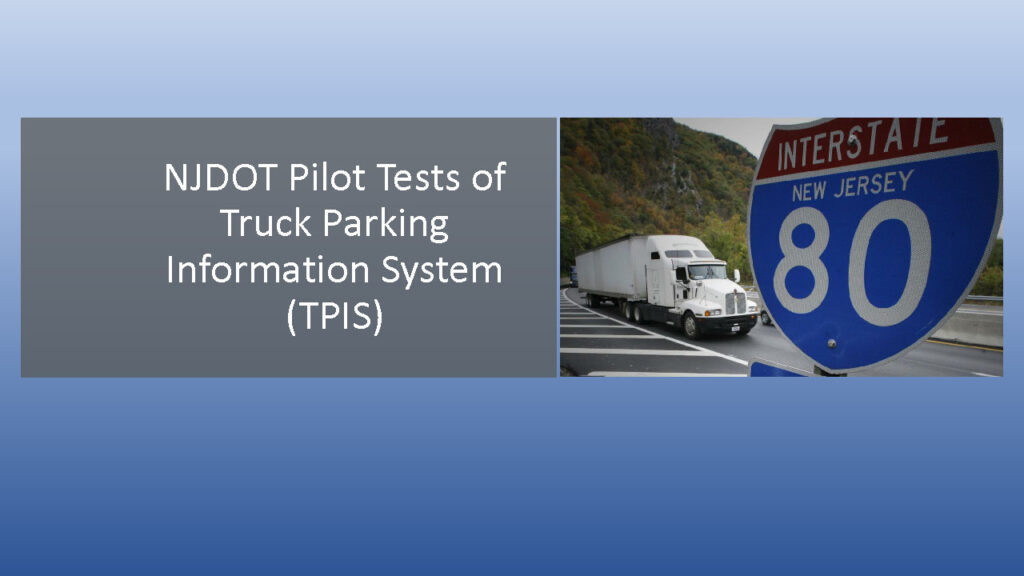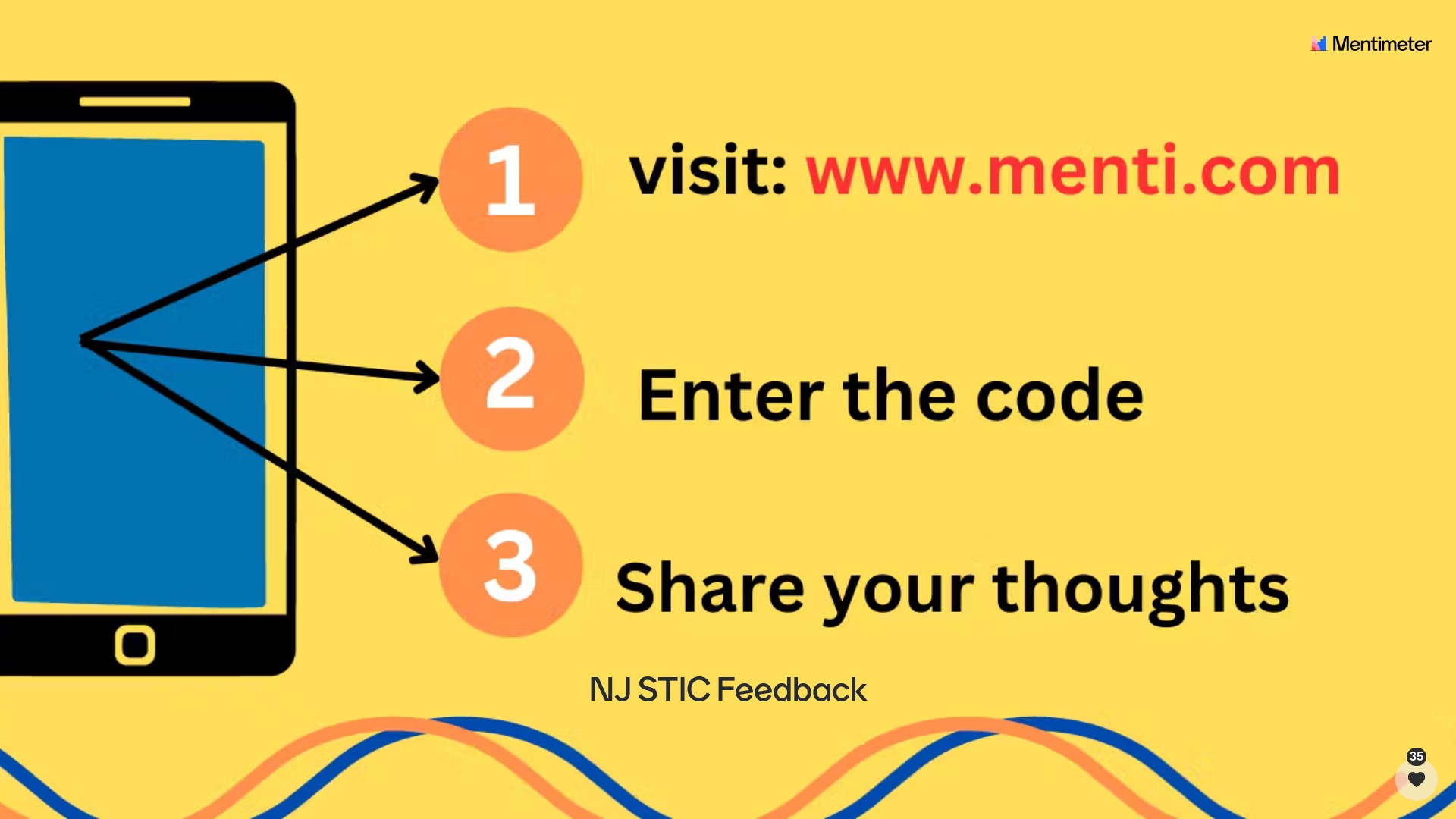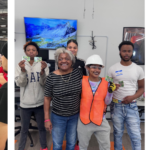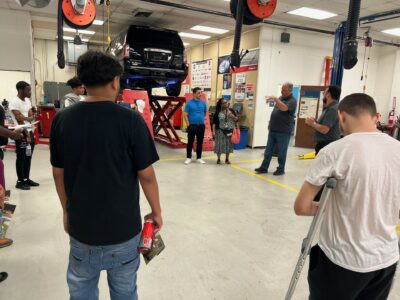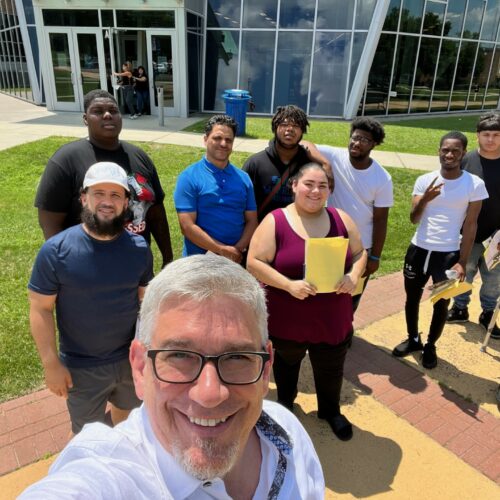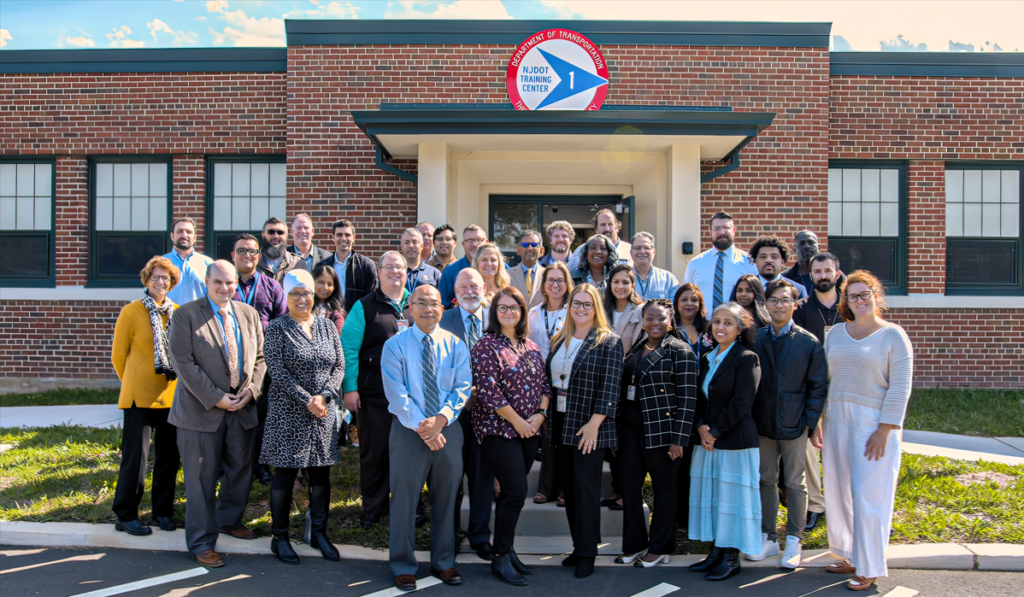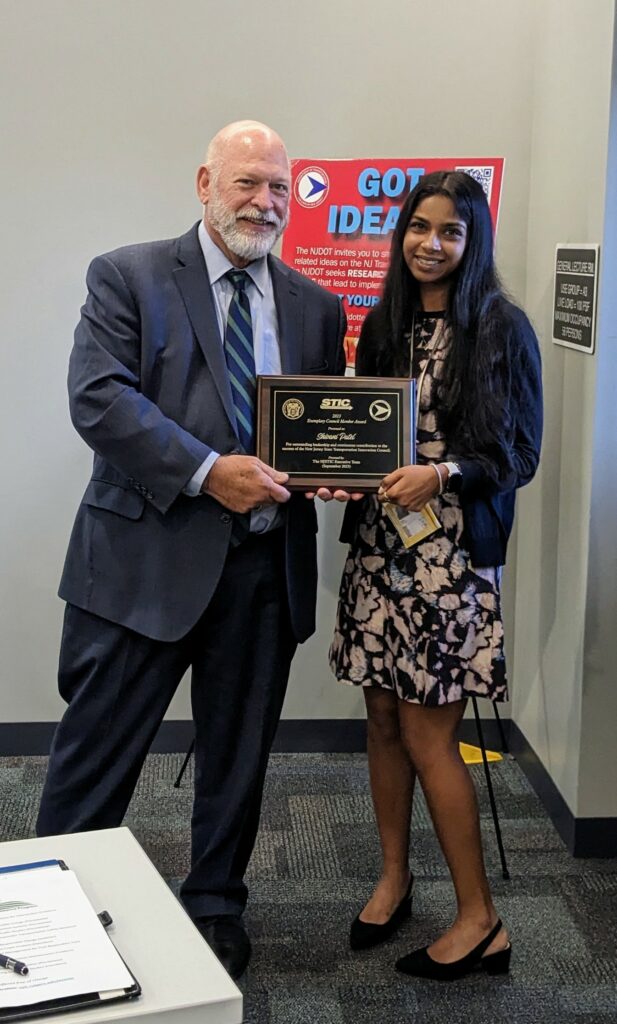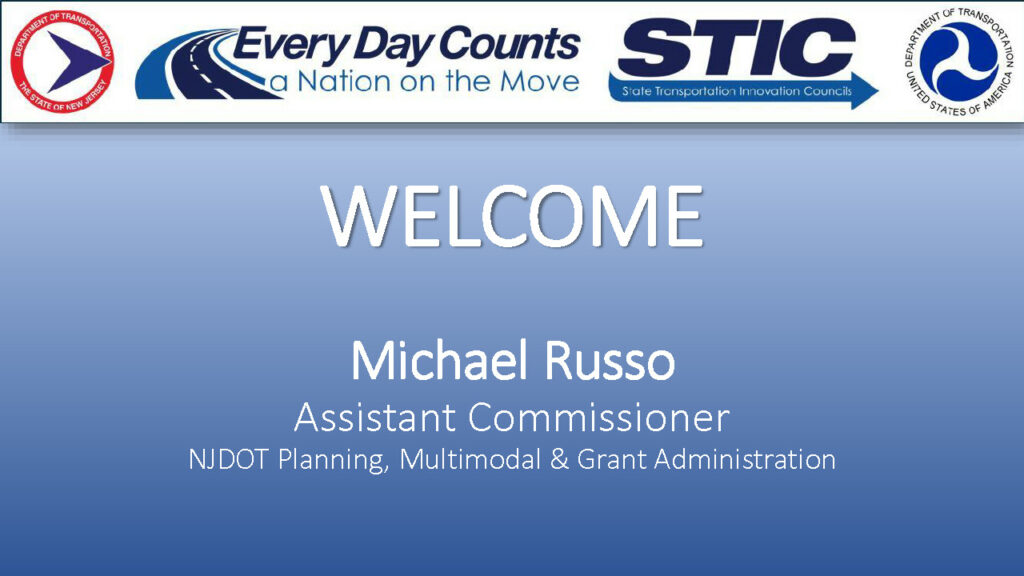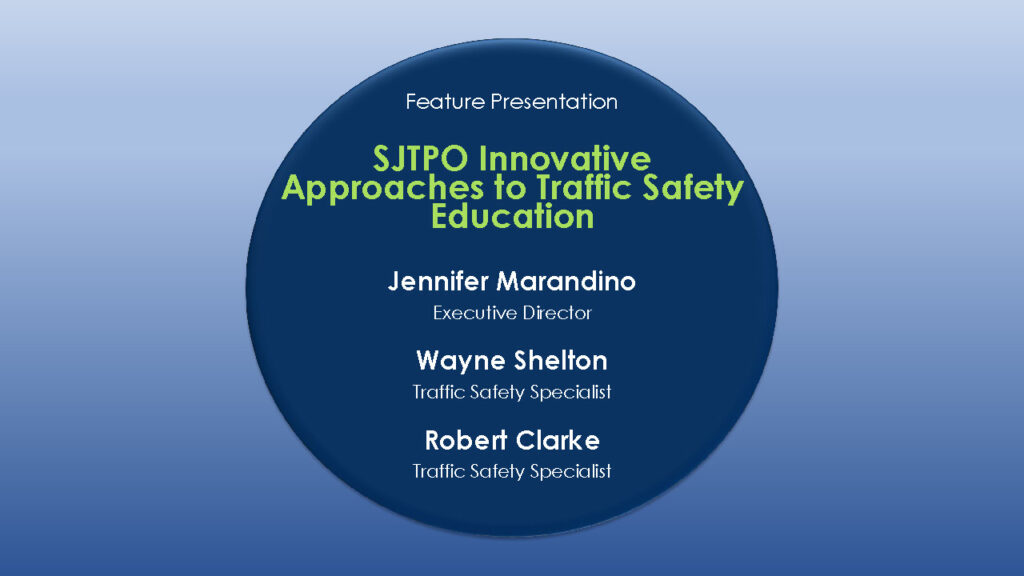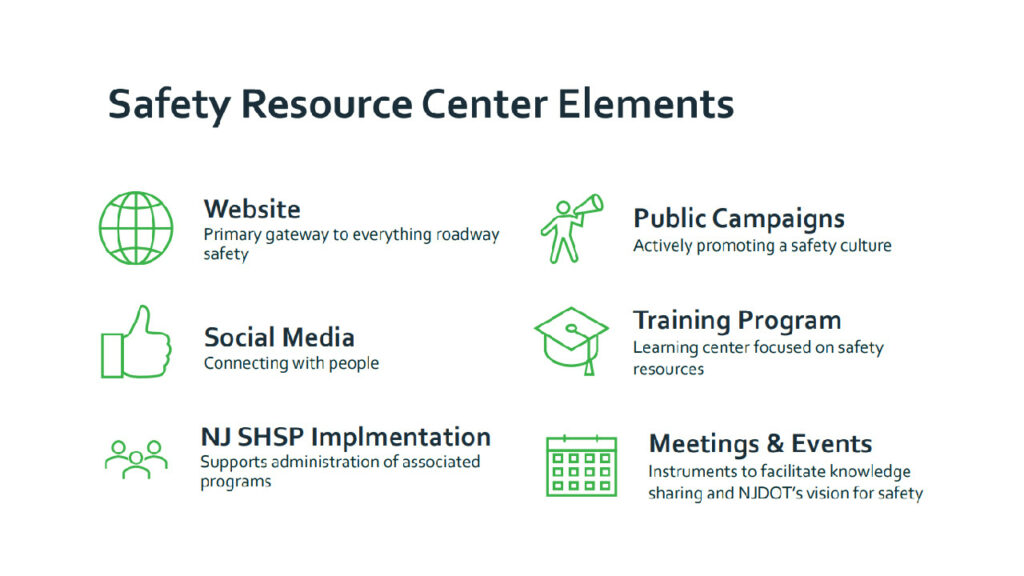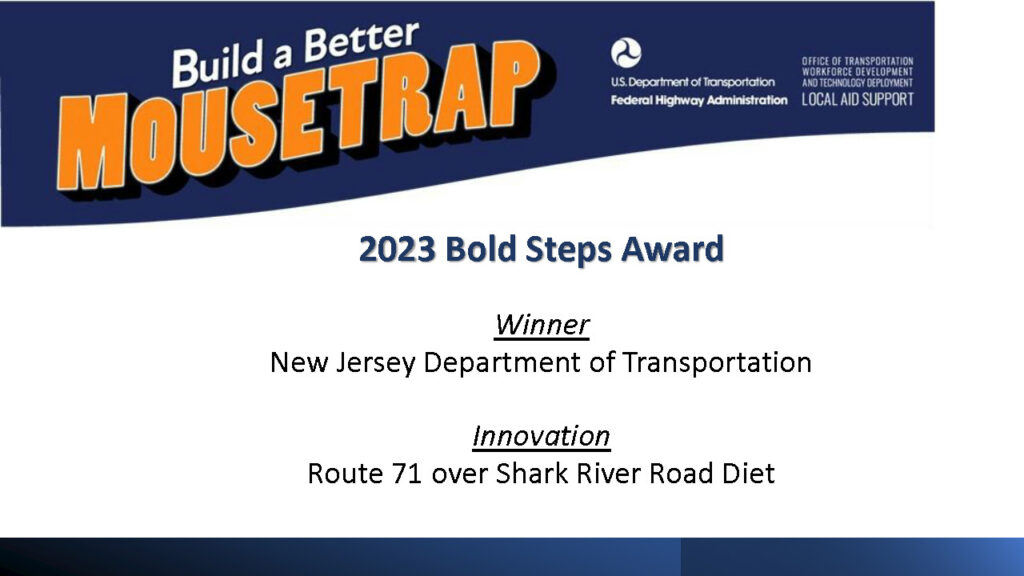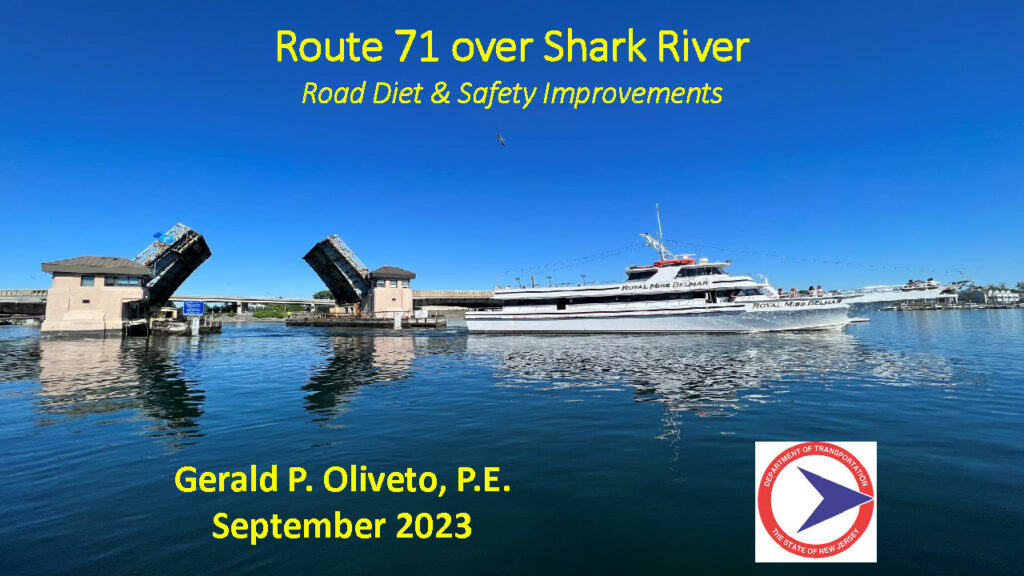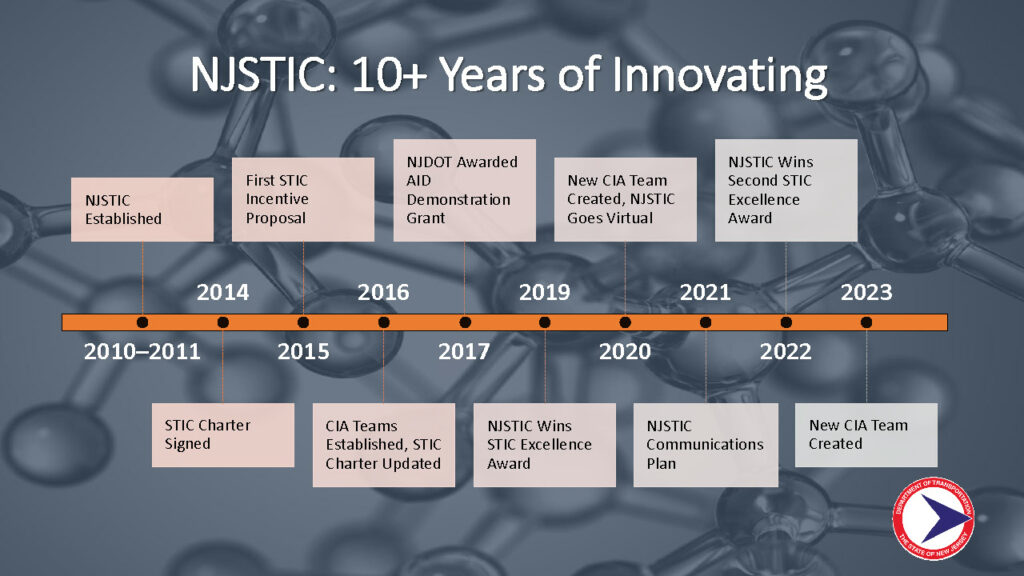The NJ State Transportation Innovation Council (NJ STIC) virtually convened for its 3rd Triannual Meeting of 2024 on December 18, 2024. The meeting provided an opportunity for attendees to learn from the Core Innovation Area (CIA) Teams about their progress towards Every Day Counts Round 7 (EDC-7) goals and to view a featured presentation on the Safe System Approach (SSA) from the NJDOT Bureau of Safety, Bicycle and Pedestrian Program’s Jeevanjot Singh.
Welcome Remarks
Eric Powers, Assistant Commissioner of NJDOT Statewide Planning, Safety & Capital Investment, greeted those in attendance and opened the third and final Triannual Meeting of 2024. Mr. Powers shared his excitement for the featured presentation on the SSA as a necessary step towards increased safety on New Jersey roadways. He noted that the presentation aligns well with the recently published Complete Streets Policy, released by NJDOT in October. He reminded those in attendance that safety will continue to be a critical component and focus for the department going forward.
FHWA Updates
Christopher Paige, Innovation Coordinator and Community Planner at the FHWA NJ Division Office, provided FHWA updates and thanked the CIA Teams for submitting their EDC-7 progress reports on time. Mr. Paige announced the “Call for Ideas” for Round 8 of the Every Day Counts Initiative (EDC-8) that will run through February 4, 2025. Those interested in submitting market-ready innovations to deploy in 2026 as a part of EDC-8 can learn more here. Additionally, Mr. Paige reminded the audience that STIC incentive applications are open for Year 2025 and encouraged prospective applicants to send in a description of the proposed work, a project schedule, and a budget by July 1, 2025. Those interested in learning more about the application process for STIC funding should check out the NJDOT Tech Transfer’s STIC Incentive Funding Grant webpage
Core Innovation Areas (CIA) Updates
The Core Innovation Area (CIA) Team leaders shared updates on their progress toward achieving the deployment goals for their respective innovation initiatives. CIA Team leaders from the NJDOT and FHWA discussed EDC-7 initiatives under the five CIA Teams: Safety, Planning and Environment, Infrastructure Preservation, Mobility and Operations, and Organizational Support and Improvement. Each team’s presentation detailed their ongoing projects and outlined implementation activities, accomplishments, and challenges experienced so far in meeting the deployment goals for the innovations. A brief overview of team updates is included below:
Planning and Environment
GHG Emissions Reductions Strategies. The Planning and Environment CIA Team established GHG targets for 2024 to support New Jersey’s carbon reduction goals. To achieve these emissions targets, the Team has collaborated with MPOs, NJ TRANSIT, and PATH, ensuring the alignment of strategies between various transportation stakeholders. The Team also plans to develop and implement a ranking system for carbon reduction projects based on GHG emissions impacts, enabling NJDOT to prioritize projects that best contribute to state objectives.
Safety
Pedestrian Scale Lighting Research and Resource. The Safety Team at NJDOT collaborated with the Alan M. Voorhees Transportation Center at Rutgers University and Rowan University to develop best practices for pedestrian lighting solutions. The team is finalizing a pedestrian-scale lighting resource that includes information on types of lighting, luminaire placement, strategies to reduce fatalities and serious injuries, collaborations with utility companies, and environmental considerations. The team expects to complete the project soon.
Nighttime Visibility for Safety. The Safety Team also updated the STIC on progress made toward the installation of retroreflective tape on the backplates of intersection lights and signage. Subject matter experts are currently reviewing the finished draft, which outlines traffic signal poles and mast arm details for signalized intersection installations. At the same time, the Division of Traffic Engineering continues to install retroreflective tape on backplates where and when feasible. The Team also announced that FHWA will host a lighting training on January 28 and 29.
Infrastructure Preservation
Enhancing Performance with Internally Cured Concrete (EPIC2). The Infrastructure Preservation Team has secured a STIC Incentive Program grant to purchase specialized testing equipment, train NJDOT staff, and hire a third-party lab to conduct tests for the EDC-7 EPIC2 innovation project. The project’s next major initiative is the implementation of New Jersey’s first high-performance concrete (HPC) bridge deck at North Munn Avenue over Route 280 in East Orange, which received funding in October 2024. Construction on the bridge project is scheduled to begin in Fall 2026. The Team is also preparing final design submissions for additional candidate bridges and scoping other potential projects. In the coming quarter, they will continue collaborating with concrete suppliers, purchasing new testing equipment, and updating the High-Performance Internal Curing (HPIC) specifications to incorporate centrifuge apparatus elements. NJDOT plans to host an EPIC2 workshop in April 2025 to further advance the project.
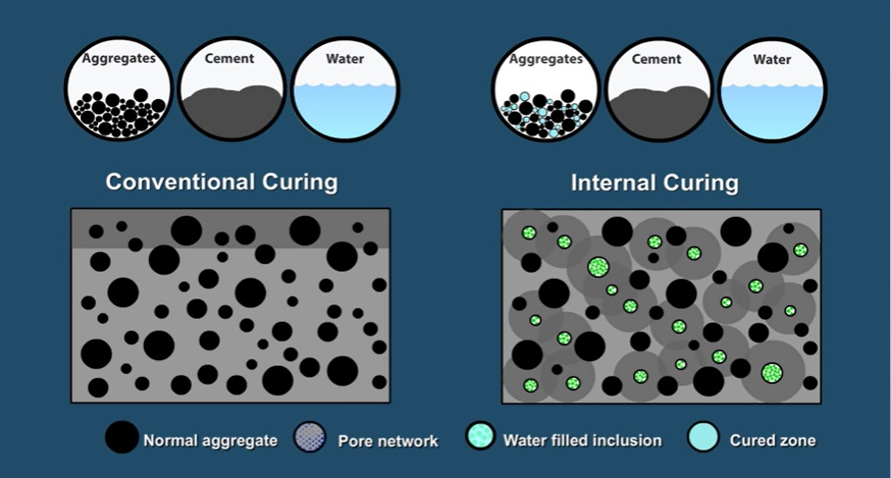
Additionally, the Federal Highway Administration (FHWA) recently released a publication on the early implementation of UHPC overlays, which will contribute to ongoing efforts in concrete innovation. The Team is working to expand the use of internally cured HPC in New Jersey and potentially New York, aligning with best practices in the concrete industry. The FHWA publication mentioned during the presentation is available here: “Experiences from Early Implementations of UHPC overlaps”.
Environmental Product Declarations (EPDs) for Sustainable Project Delivery. The Infrastructure Preservation Team has also made progress on phase 1 of their EPDs project goals. Since August, the Team has coordinated with the New Jersey Asphalt Paving Association for guidance to create an EPD for Bottom Rich Base Course or BRBC mix asphalt.
The Team has also researched and collaborated with other state DOTs including PennDOT and DelDOT to learn how these agencies will implement EPDs. PennDOT will begin data collection in 2025 and institutionalize EPDs by 2028. While DelDOT seeks to reduce carbon in construction materials as a part of the statewide climate solutions initiative. The agency plans to achieve this through incentives and disincentives. Both agencies selected asphalt as the first material for EPDs and are working with their state’s asphalt paving association to ensure industry support. In the upcoming quarter, the CIA team will analyze data benchmarks and collaborate with industry partners to advance the adoption of EPDs.
Mobility and Operations
Weather Savvy. The Mobility and Operations CIA Team has made progress on multiple projects over the last quarter. In collaboration with researchers from NJIT, the team advanced the Weather Savvy pilot, which installs weather sensors, laptops, and cameras in vehicles to receive improved data during winter weather events. The project that started in December 2023 has expanded from 24 vehicles to 45 vehicles, and the team has decided to prioritize installations in plows because they stay on the road during weather events. The team indicated that sensors and hardware are now being installed in a junction box, which is a more secure location that will keep water, dirt and salt away from the technology.
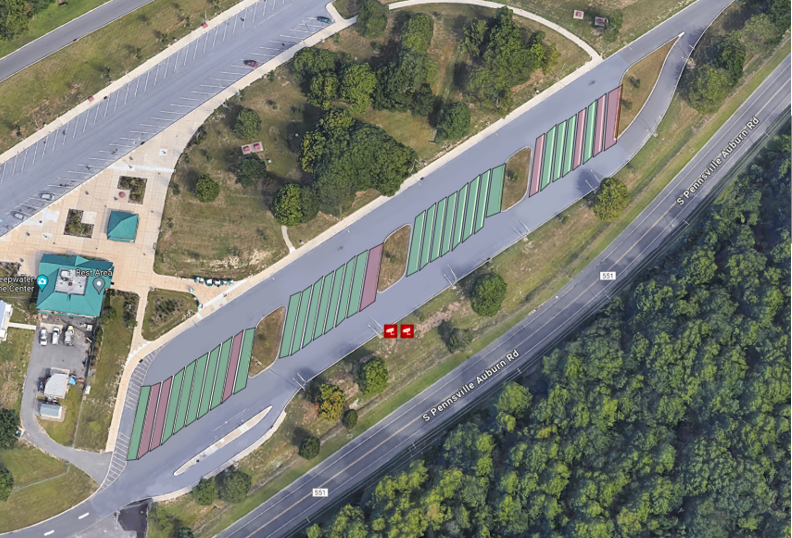
Truck Parking Pilot. The team was excited to share its progress toward installing portable Direct Messaging Systems (DMS) signs five miles away from the pilot Harding parking lot located on I-287 and I-78. These signs will inform drivers prior to arrival about parking availability. The team may expand the pilot project to Knowlton in 2025.
Drivewyze Alerts. Mobility and Operations updated the STIC on the Drivewyze alerts effort, a program purchased through ETC to notify commercial vehicle drivers of sudden slowdowns, congestion, and static warnings. To evaluate the efficacy and accuracy of these alerts, the CIA Team deployed NJIT researchers to drive two different loops along frequently congested highways. While results showed that static alerts were 95% accurate, drivers did not receive any congestion-related alerts. Discussions with a Drivewyze representative revealed that congestion had not been selected as an alert type among the program settings. The representative assured the issue would be corrected, and NJDOT plans to conduct another test in the near future.
EDC-7 Next Generation TIM. Finally, Mobility & Operations announced that a newly written article, “NJDOT Deploys Advance Warning Messages for Truck Drivers” will be submitted to FHWA HQ as a potential EDC innovation spotlight.
Organizational Support and Improvement
Contractor Compliance Unit Collaboration. The Team announced that the FHWA funding approved in November 2024, would support hiring a consultant in-house to advance NJDOT’s EDC-7 Strategic Workforce Development efforts. The Team also highlighted its recent collaboration efforts with the Office of Federal Contract Compliance to identify best practices for larger-scale projects. These efforts aim to design effective informational sessions on workforce development, training, and collaborating with unions. On December 2, 2024, the Team participated in an industry meeting where attendees discussed concerns about declining union membership and involvement in apprenticeship programs, trends tied to an aging labor market. Participants brainstormed strategies to increase membership and strengthen engagement. The next meeting, scheduled for January 2025, will prioritize including more unions in the discussions to enhance collaboration and address these challenges.
Feature Presentation: Safe Systems Approach in New Jersey
Jeevanjot Singh, Safety Program Manager at the NJDOT Bureau of Safety, Bicycle, and Pedestrian Programs delivered a feature presentation highlighting the practicality and necessity of incorporating the safe systems approach into New Jersey roadways.
The Safe System Approach is built on five key elements and six guiding principles:
Five Elements
- Safe Road Users
- Safe Vehicles
- Safe Speeds
- Safe Roads
- Post-Crash Care
Six Guiding Principles
- Death and serious injury are unacceptable
- Humans will make mistakes, so systems should be designed to accommodate and reduce harm
- Humans are vulnerable, and roadways should be designed to minimize kinetic energy transfer in crashes
- Responsibility for safety is shared among all stakeholders
- Safety is proactive and it is imperative to use risk-based mitigation measures
- Redundancy is key, with systems designed to support each other and prevent fatalities if one safety effort fails
Ms. Singh urged all attendees to reflect on the importance of Safe Systems Approach (SSA) and the responsibility that we as planners and engineers share in this effort. This responsibility is urgent, as New Jersey recorded over 600 fatalities on its roadways in 2024, far exceeding the FHWA’s 2024 target of 494 fatalities. Achieving the goal of zero fatalities by 2025 will require intentional, sustained efforts to reduce fatalities. She noted that NJDOT is making significant strides in implementing the Safe System Approach, including the updated statewide Complete Streets Plan, efforts to improve of dangerous intersections through safer engineering, and educational awareness programs, among other initiatives. While the list of efforts is extensive, she highlighted two recently implemented programs which are outlined below.
One example is the Wrong Way Driving Detection System. NJDOT conducted a systemic analysis to identify ramps with a high risk of wrong-way driving incidents and subsequently installed a system of dynamic flashing warning lights activated by wrong way drivers. This system was paired with additional signage and pavement markings. During the presentation, Ms. Singh shared a video that demonstrated the successful prevention of a wrong-way incident using this approach. Another example of SSA implementation by NJDOT is the Route 129 project in Mercer County, which includes pedestrian and bike safety improvements, traffic calming measures such as chicanes and raised crosswalks, and autonomous crosswalk detection warning lights that activate when a pedestrian enters the road. Although still in the early stages of development, Singh sees potential in expanding the project to include other corridors.
She concluded her presentation by outlining resources from FHWA that can support STIC members in learning more about the Safe Systems Approach. She highlighted the Safe System Road Design Hierarchy, a tool that guides road design through a four-tier decision-making system, and the Safe System Project-Based Alignment Framework, which offers another decision-making system tool for designers. She also announced that a multi-agency collaboration will host an upcoming SSA workshop, providing professionals with an opportunity to learn more about SSA alignment in New Jersey.
Announcements and Reminders
NJ Transportation Ideas Portal. Dr. Venkiteela encouraged attendees to participate in the NJ Transportation Ideas Portal, which invites public submissions of future research ideas and implementation studies. The Innovation Advisory Team evaluates these proposals for feasibility and potential future actions. He highlighted that the portal continuously accepts new research and innovation ideas for consideration for future collaborative efforts and investments. The deadline to submit research ideas for the next round of funding is December 31, 2024.
EDC-8 “Call for Ideas.” Dr. Venkiteela reminded attendees that the deadline to submit ideas for EDC-8 is February 4, 2025. FHWA is seeking suggestions for market-ready innovations to deploy in 2026. Learn more here.
NJDOT Low-Carbon Material Transportation Grant Program. In November 2024, NJDOT secured a $27.85 million grant for the Low-Carbon Transportation Material (LCTM) Program. BRIIT will lead the program’s implementation from 2025 through 2031. Dr. Venkiteela congratulated all those who contributed to the successful application.
Next Meeting. Dr. Venkiteela reminded attendees that the 1st Triannual Meeting of 2025 will occur on April 30, 2025 at 10 a.m., featuring a presentation from the Infrastructure Presentation Team.
Acknowledgment: Dr. Venkiteela concluded the meeting by thanking Amanda Gendek for establishing a solid foundation for STIC meetings in her previous role as BRIIT Manager. Dr. Venkiteela also thanked current BRIIT Manager Pragna Shah for her continued guidance and support.
A recording of the NJ STIC 2024 3rd Triannual Meeting meeting is available here. The day’s presentations can be found here and, in the sections, below.

